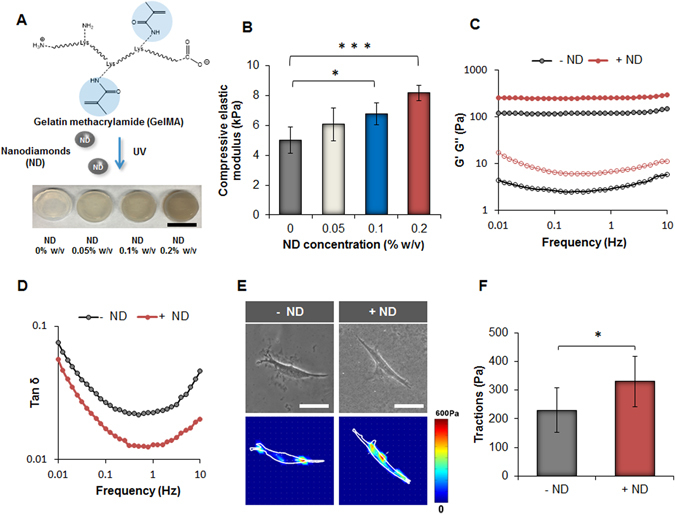Figure 4.

Influence of the NDs on the mechanical properties of GelMA hydrogels and evaluation of the substrate stiffness on hASCs traction forces. (A) Schematic indicating the functional groups in GelMA involved in the process of crosslinking using UV irradiation. On the bottom, an image displaying the different GelMA nanocomposite hydrogels prepared using several concentrations of NDs. (Scale bar = 15 mm). (B) Compressive elastic modulus of the different samples obtained by varying the concentration of NDs. Results are reported as mean ± S.D., (n = 5). (C) Frequency sweep carried out in the range of 0.01 up to 10 Hz indicates an increase in the value of the storage modulus (G’) for the system containing NDs (0.2% w/w). (D) Tan δ (G”/G’) profiles indicate a decrease of this parameter in the presence of NDs (0.2% w/w) in all the range of frequencies tested. (E) Phase contrast pictures (scale bar = 200 µm) and traction map images of hASCs cultured on GelMA hydrogels (−ND) and nanocomposite hydrogels (+ND) after 24 hours. (F) Root-mean-square (RMS) traction values of hASCs indicating an increase in cell traction on the substrate containing NDs. Results are showed as mean ± S.D., (n = 8). (*p < 0.05, ***p < 0.001).
